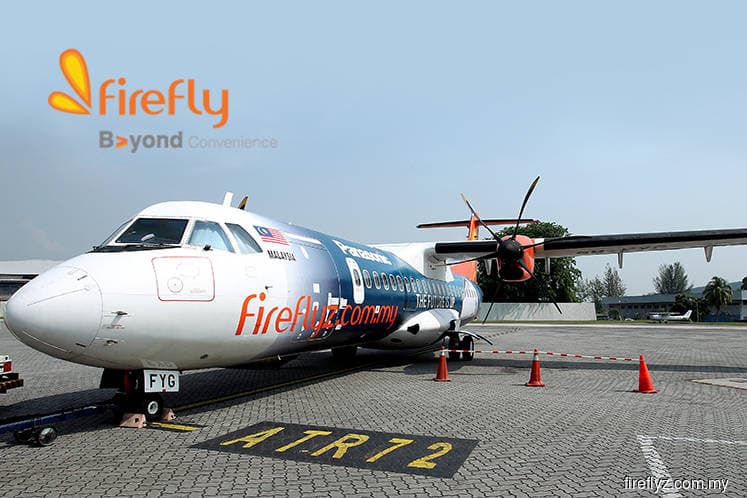
This article first appeared in The Edge Financial Daily on April 22, 2019
SINGAPORE: Malaysia’s premium short-haul airline Firefly has said that it is confident it could break even relatively fast after resuming its service to Singapore via the Seletar Airport.
Chief executive officer Philip See said the airline, which caters mostly to business and corporate customers, would therefore move to sustainable profitability in “a very relatively short period of time”.
It was reported that it had incurred a “significant” loss following its suspension of flights to Singapore from Dec 1, 2018.
Singapore was the airline’s second-largest route after Penang. It previously had 10 slots of flights (inbound and outbound) every day between the Subang International Airport and the Changi Airport in Singapore.
“We can’t disclose the actual financial performance but for us we always operate 12 aircraft. For the turboprop business the asset is very key … utilising the asset is critical … so Singapore is key to enable us to do that,” he said after a welcome ceremony to mark Firefly’s inaugural landing at the Seletar Airport here yesterday.
The ceremony was attended by Transport Minister Anthony Loke and his Singapore counterpart Khaw Boon Wan.
Some 72 passengers were on board the Firefly flight FY3126 from Subang to Seletar, together with Loke and his accompanying delegation, whom were later greeted by Khaw.
When asked whether Firefly would consider other destinations, See said: “That is what we want to do.
“We just started two daily flights [here]. We are going to move to six. We will monitor the performance and then we are going to see how we want to grow later,” he said.
Firefly will operate a twice-a-day Subang-Seletar service, using ATR 72-500 turboprops, from yesterday to April 28, and will increase it to six daily flights from April 29.
“Definitely, we see the nature of the airport … it is such a great airport. So many opportunities for us to grow. The question for us now is how do we grow it sustainably and in a way build awareness. This is something we are going to commit to investing in the coming weeks and months.”
On expanding the fleet, See noted that “it is something that we actively look at”.
“We will monitor these six daily flights carefully. If there is room for expansion … we will proceed to do that.
“We are happy to be back again at Seletar. Our customers always love our Subang-Singapore route because it is so convenient. We are more excited to be at Seletar,” he added.
On the cost to outfit the aircraft with the new Global Positioning System (GPS) approach procedures, See said Firefly is waiting to see how the bilateral conversation takes place, and would take its cue from there.
‘GPS approach for Firefly involves cost’
Earlier at a joint press conference with Khaw, Loke said that there would be a cost involved for Firefly to implement the new instrument, which will be rolled out within six to 12 months.
“The amount involved is a commercial decision by Firefly. We are looking forward to Firefly working closely on that in a timely manner, and we are looking [forward to it being] implemented in the next six to 12 months,” Loke said.
The aviation regulators of both countries will meet soon to discuss the new GPS approach.
The air disagreement first surfaced on Nov 23 last year when Firefly said it would suspend all flights to Singapore from Dec 1, 2018, the day it was supposed to move its operations from Changi to the Seletar Airport.
Malaysia objected to the new Instrument Landing System (ILS) procedures for the Seletar Airport, claiming that they would impose height restrictions and affect development in Pasir Gudang.
However, on April 6, Malaysia and Singapore agreed that in the spirit of bilateral cooperation, the city state would withdraw the ILS procedures for the Seletar Airport, while Malaysia would indefinitely suspend its permanent Restricted Area over Pasir Gudang. — Bernama